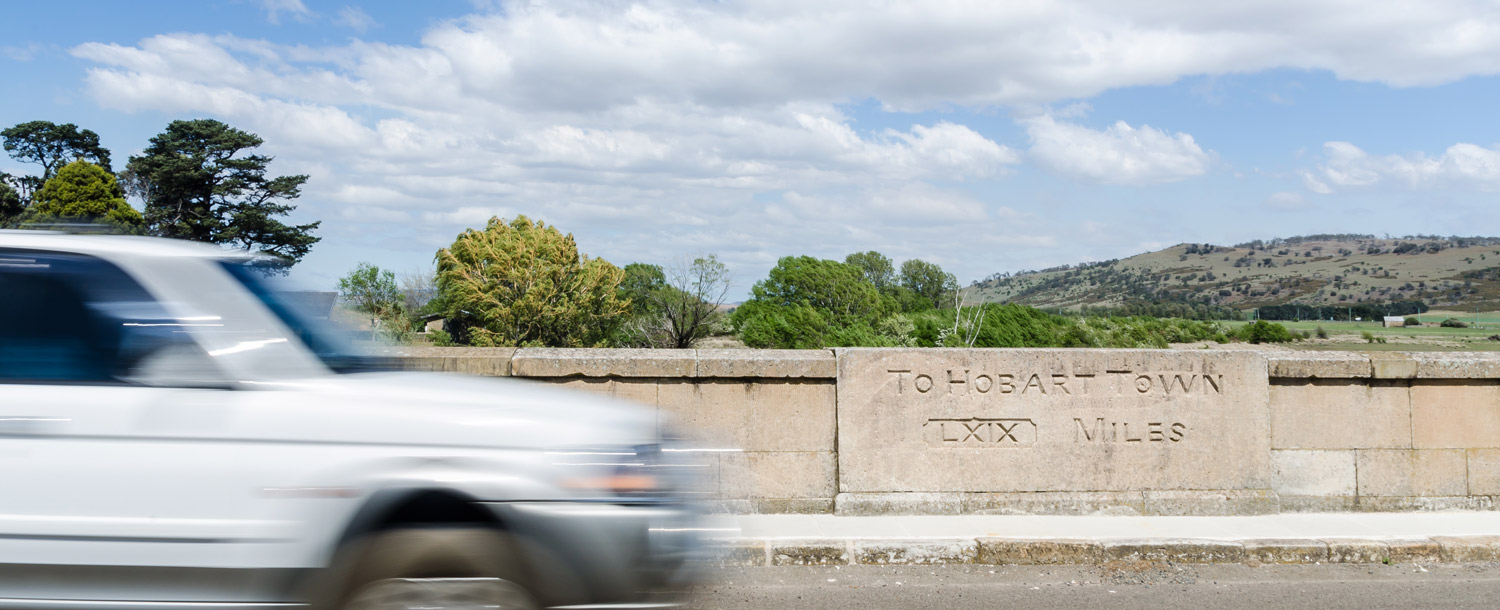Exploring around Ross

Ross, centrally located on Tasmania's Heritage Highway linking Launceston amd Hobart, makes a great base for exploring the region.
Nearby towns include.
Campbell Town: (12km north of Ross) Was established in the 1820's as one of a chain of garrison stations between Launceston and Hobart. Today it is the centre of fine wool and beef cattle production. Its historic highlights include the Red Bridge (1838), Fox Hunters Return (1833), The Grange (1847), and St Lukes Church (1839). Campbell Town is the home of the convict brick trail, where bricks embedded in the footpath of the main street tell the stories of many convicts. Stroll the banks of the Elizabeth River or browse the antique and gift shops.
Avoca: (49km north east of Ross) This hamlet is set on the riverbanks at the junction of St Paul and South Esk Rivers. It has several fine buildings including St Thomas' Anglican church (1842) and Rectory (1845)
Evandale: (78km north west of Ross) The Georgian buildings of Evandale reflect a by-gone era. It is another of the states most beautifully preserved colonial villages, with perhaps the best example of a grand Georgian mansion, Clarendon (1836). Faithfully restored by the National Trust, Clarendon is open to the public.
Longford: (82 km north west of Ross) Was first settled in 1813 and is one of the oldest towns in Northern Tasmania. The town retains its fine historic buildings, many of which were built by convict labour. Many of the old Georgian buildings now house a variety of specialist craft and antique shops. Longford echoes its English and Irish heritage with rich pastures, hawthorn hedges, historic farms and stately homes, some of which are open to the public. World Heritage Listed Woolmers, home of the National Rose Garden and Brickenden, Colonial Farm, are open daily.
Tunbridge: (12km south of Ross) A milestone commemorates the first Hobart to Launceston mail service in 1816 and the start of the road link in 1820. A midland coach is on display in the Main street and a convict-build timber and stone bridge (1848) spans the Blackman River. This bridge was the scene of serveral meetings between Thomas Meagher, a Young Ireland Rebel and one of his fellow-conspirators. They met in defiance of the ruling that forbade them to meet or pass out of their assigned districts, the Blackman River marking the boundary between their two districts. The plains surrounding Tunbridge were know as the Salt Pan Plains due to four salt lakes in the area. In the early days of the colony salt was havested from these lakes.
Oatlands: (34km south of Ross) Has more sandstone buildings than any Village in Australia, and the main street retains the character of a 19th century town. Admire the goal, courthouse, fully restored, working Lincolnshire flour-mill, inns, churches and cottages. Along the highway to the north of Oatlands you will see the whimsical topiary created by the late Jack Cashion in the 1960's and 70's.
Bothwell:(84km south of Ross) Situated on the Clyde River, this village dates back to 1824. Its fine wide streets were laid out by its Scottish forefathers who brought with them their own native sport - golf - and so established the first golf course in Australia, with Golf Museum open daily.
Kempton: (73km south of Ross) Quiet Kempton was once a thriving centre of industry boasting a flour mill, brewery and numerous hotels and coaching inns. Many tradesmen who serviced the coach horses were based in Kempton. A detour through Kempton will reveal some lovely early buildings.
Pontville: (88km south of Ross) Pontville on the Jordan River has some interesting colonial buildings, including barracks, workers cottages and stately homes. The romanesque style of St Marks Church was the work of convict architect James Blackburn.
More information about the Heritage Highway can be found at www.heritagehighway.com.au